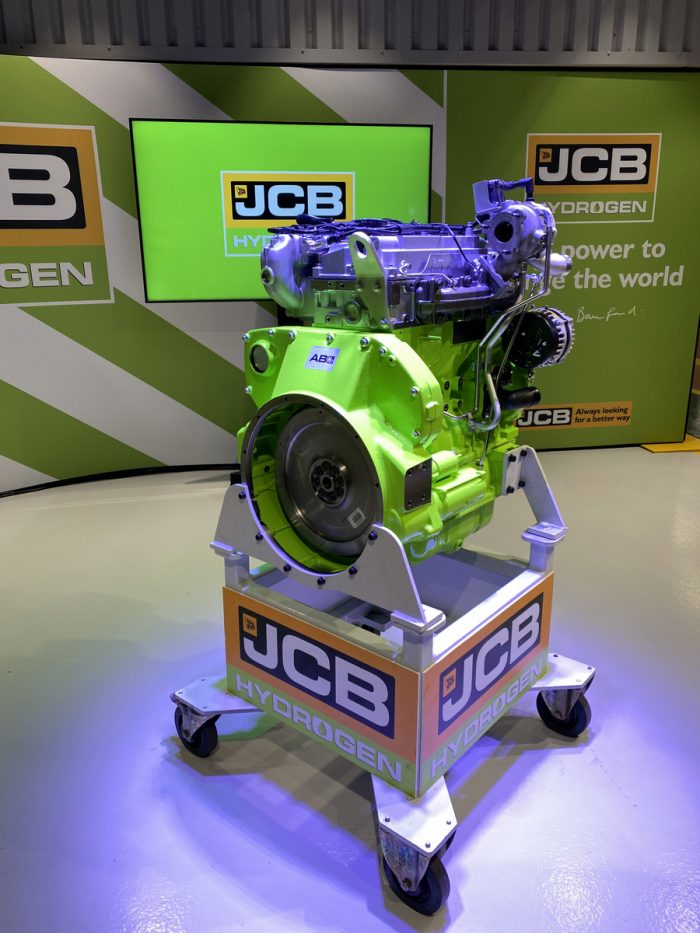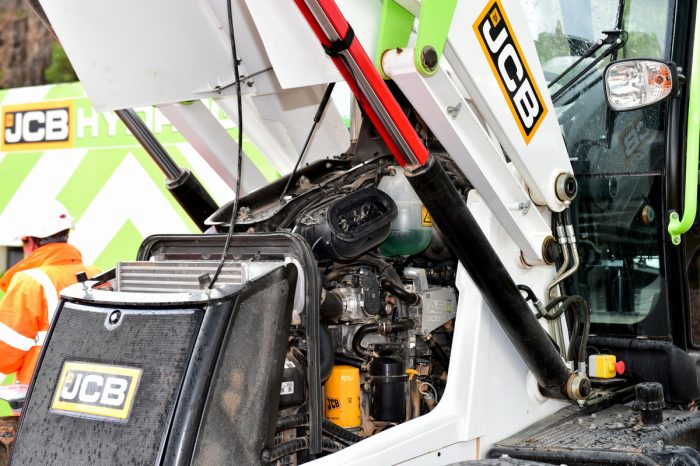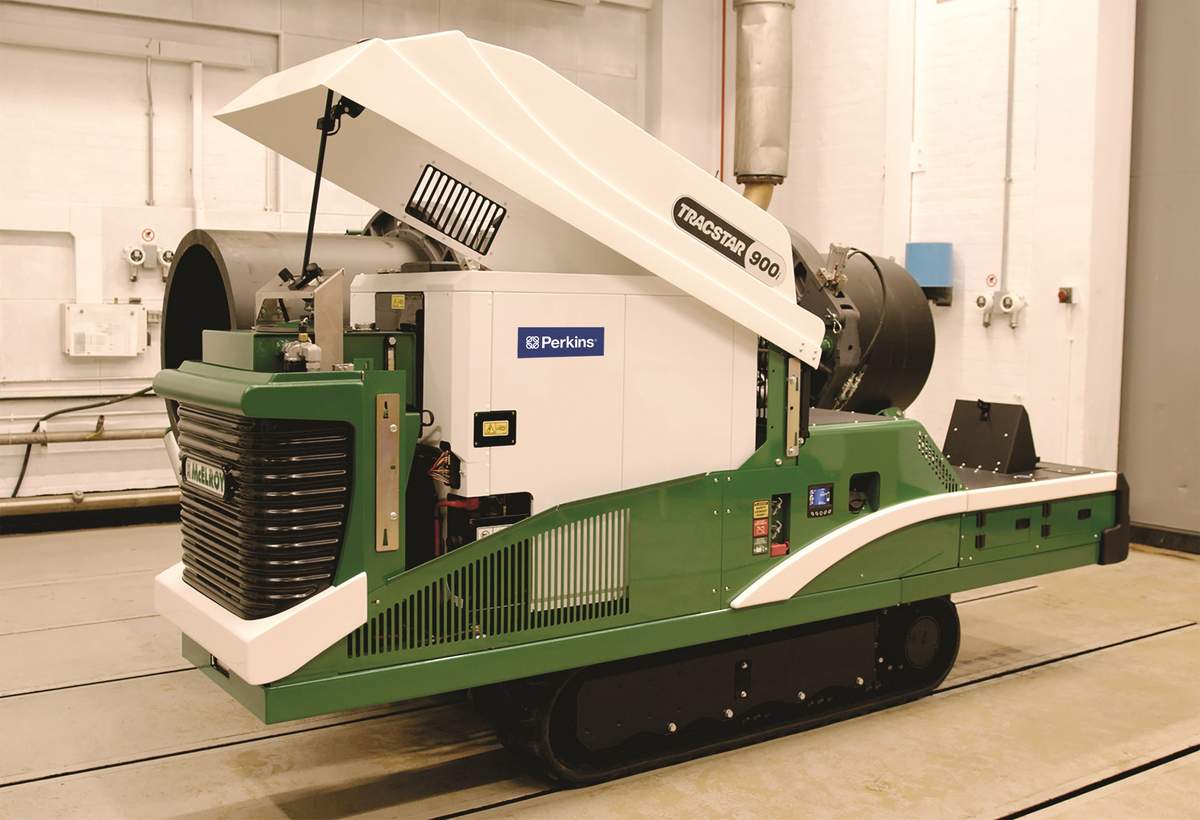Innovative Iron Award Winner: JCB’s Hydrogen Combustion Engine

The Top Construction Landscape and Rental Equipment Launched in 2023
The world of off-highway machinery is evolving — battery-powered units, hydrogen engines, luxury and economy tiering, machine control automation — but maybe the biggest evolution is that everyone wants a compact machine. Small, tool-carrying construction equipment now make up about 50 percent of the U.S. machinery market with mini excavators and compact track loaders being the two most popular categories in America. To meet this enormous demand, machine makers released some pretty awesome machines in the past 12 months: advanced skid steers, electric asphalt pavers, entry-level grade control attachments and so much more. The 2023 Innovative Iron Awards celebrate the best of these compact equipment launches. Scouring tradeshows, visiting manufacturers, operating units, interviewing experts, this annual compilation represents the best equipment we’ve seen and experienced all year, including…
JCB’s Hydrogen Combustion Engine

JCB is investing heavily in the future of construction equipment. The global brand already has one of the biggest battery-powered machine lineups on the market, and in 2023 JCB’s power division brought out its 4.8-liter, four-cylinder hydrogen combustion engine, blazing a new trail for alt propulsion in the off-highway equipment sector. The JCB hydrogen combusting engine uses H2 gas (not fluid) that is ignited with sparkplugs (vs. a diesel that uses compression) and emits zero emissions (only water vapor). This H2 engine is geared toward midsized construction equipment, and JCB showcased a prototype backhoe, telehandler and H2 fuel truck using this hydrogen combustion engine.
JCB sees big potential for its hydrogen combustion engines in midsized and larger equipment for a number of reasons. These H2 engines emit zero emissions with water vapor coming out of the stack, not smoke, and NOx creation is controlled in the cylinder. Hydrogen in its gaseous form is easy to move in a refueling truck, just like traditional diesel. There are no spills when refueling an H2 unit. Unlike with traditional diesel, hydrogen just floats into the air. The engine envelop is pretty much the same as diesel, and the cost formula is still within reason for rental houses and contractors. Maybe the biggest attraction is the lack of re-engineering needed for hydrogen combustion vs. hydrogen fuel cells (a competing technology).
“With a fuel cell excavator, we had to start from scratch. We ripped out everything we’ve developed and matured over the last 75 years of building construction equipment,” explained Lee Harper, chief engineer at JCB, when I visited the company back in January. “With a hydrogen combustion engine, everything pretty much is the same — same cooling pack, same cab, same chassis, same as everything is as it was. The changes really only come in the cylinder head area. The crank case and below is the well proven JCB bottom end. We introduced a new revised geometry and the hydrogen fuel system and spark plugs. That really is it.”

The company has also highlighted a prototype 20-metric-ton excavator powered by a hydrogen fuel cell, but only as an example of technology it wasn’t embracing. Hydrogen fuel cells work like batteries, producing electricity and heat as long as a fuel (in this case hydrogen) is supplied. A fuel cell uses the chemical energy of hydrogen to cleanly and efficiently produce electricity, and it only emits water as a byproduct. JCB cited a variety of challenges when using fuel cells in construction equipment: fuel cell availability; complex and difficult cooling parameters (which is why fuel cells are more popular in moving applications like haul trucks, wheeled excavators and cars because of the cool air when driving); difficult maintenance and fuel cell contamination from dust and debris; uncertainty about resale value; and the use of a special coolant, which is so expensive the engineering team termed it “whiskey” because it’s about the same price per liter as a good bottle.
JCB feels hydrogen combustion is the answer for larger compact equipment and above. The hydrogen gas can easily be stored in automotive grade carbon composite wrapped tanks that carry the fuel at a low pressure (350 bar). JCB has designed a H2 fuel truck, which can hold enough hydrogen to fill 16 hydrogen backhoe loaders and can be transported either on the back of a modified JCB Fastrac tractor or on a trailer.
“A key attribute that hydrogen has over electricity or any other fuel source really is the speed of replenishment,” noted Harper.
Electric construction equipment is on the rise. Learn all about the exciting products leading the charge.
Maybe the biggest convincing factor here is that hydrogen combustion delivers the same power, torque and efficiency as diesel counterparts. Contractors understand combustion technology, and it’s already proven on construction equipment. Plus, these engines don’t require rare earth elements like batteries or fuel cells, which have uncertain supply chains and volatile pricing. By leveraging diesel engine technology and components, JCB is creating hydrogen fuel motors and machines that create zero emissions and are still familiar and approachable for equipment owners and operators. It’s definitely one of the most exciting technologies on the construction equipment market right now, and JCB sees the potential to sell these engines to other folks.
So, what are the challenges? Like electric, the infrastructure for hydrogen fuel still needs to be built, but the current U.S. government seems ready to build it. In June, the Biden-Harris Administration released the U.S. National Clean Hydrogen Strategy and Roadmap, a framework for accelerating the production, processing, delivery, storage and use of clean hydrogen. A part of that roadmap includes focusing on building those regional networks with large-scale clean hydrogen production and end-users in close proximity. Learn more at hydrogen.energy.gov.

Wait, didn’t the Hindenburg use hydrogen? A number of hydrogen’s properties make it safer to handle and use than the fuels commonly used today. For example, hydrogen is non-toxic, but some of hydrogen’s properties require additional engineering controls to enable its safe use. Specifically, hydrogen has a wide range of flammable concentrations in the air, and (in certain situations) it can ignite more easily that other fuels like gas or diesel. Consequently, adequate ventilation and leak detection are important elements in the design of safe hydrogen systems. Also, some metals can become brittle when exposed to hydrogen — it’s called hydrogen embrittlement — so selecting appropriate materials is important to the design of safe hydrogen systems.
Even with these caveats, hydrogen is definitely one of the most exciting technologies in the construction equipment market. It could be the cost-effective answer for bigger emissions-free construction machinery. JCB noted this project was a £100 million investment and took a team of 100 engineers working for more than a year to accomplish. Now finished, the H-engine seems to be an easy retrofit. JCB re-engineered a Sprinter van with its hydrogen combustion engine in just two weeks. This engine is nearly ready for full-scale production.
Congrats to JCB for winning another Innovative Iron Award. For more info, surf right over here.
Keith Gribbins is publisher of Compact Equipment.



